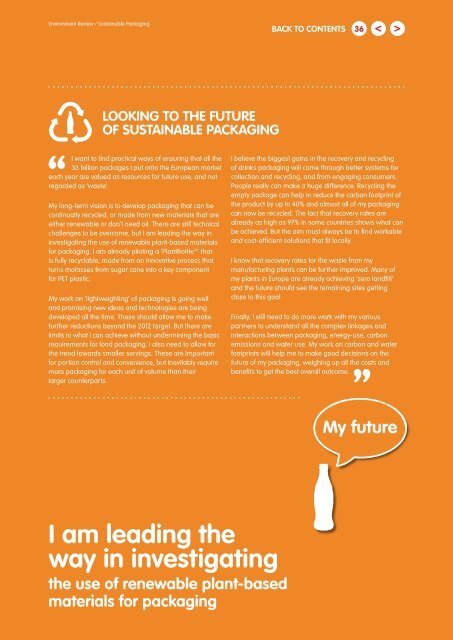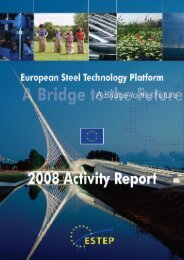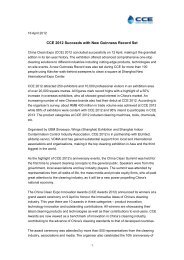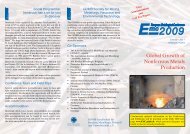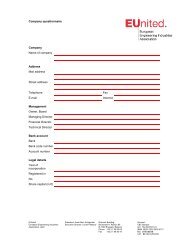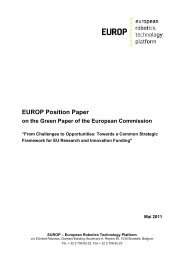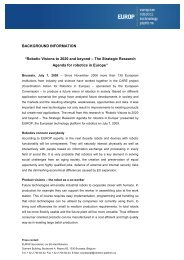Environment Review - The Coca-Cola Company
Environment Review - The Coca-Cola Company
Environment Review - The Coca-Cola Company
You also want an ePaper? Increase the reach of your titles
YUMPU automatically turns print PDFs into web optimized ePapers that Google loves.
<strong>Environment</strong> <strong>Review</strong> / Sustainable Packaging<br />
LookInG to tHE FutuRE<br />
oF sustaInabLE PackaGInG<br />
I want to find practical ways of ensuring that all the<br />
33 billion packages I put onto the European market<br />
each year are valued as resources for future use, and not<br />
regarded as ‘waste’.<br />
My long-term vision is to develop packaging that can be<br />
continually recycled, or made from new materials that are<br />
either renewable or don’t need oil. <strong>The</strong>re are still technical<br />
challenges to be overcome, but I am leading the way in<br />
investigating the use of renewable plant-based materials<br />
for packaging. I am already piloting a ‘PlantBottle TM<br />
’ that<br />
is fully recyclable, made from an innovative process that<br />
turns molasses from sugar cane into a key component<br />
for PET plastic.<br />
My work on ‘lightweighting’ of packaging is going well<br />
and promising new ideas and technologies are being<br />
developed all the time. <strong>The</strong>se should allow me to make<br />
further reductions beyond the 2012 target. But there are<br />
limits to what I can achieve without undermining the basic<br />
requirements for food packaging. I also need to allow for<br />
the trend towards smaller servings. <strong>The</strong>se are important<br />
for portion control and convenience, but inevitably require<br />
more packaging for each unit of volume than their<br />
larger counterparts.<br />
I am leading the<br />
way in investigating<br />
the use of renewable plant-based<br />
materials for packaging<br />
back to contEnts<br />
36<br />
I believe the biggest gains in the recovery and recycling<br />
of drinks packaging will come through better systems for<br />
collection and recycling, and from engaging consumers.<br />
People really can make a huge difference. Recycling the<br />
empty package can help to reduce the carbon footprint of<br />
the product by up to 40% and almost all of my packaging<br />
can now be recycled. <strong>The</strong> fact that recovery rates are<br />
already as high as 97% in some countries shows what can<br />
be achieved. But the aim must always be to find workable<br />
and cost-efficient solutions that fit locally.<br />
I know that recovery rates for the waste from my<br />
manufacturing plants can be further improved. Many of<br />
my plants in Europe are already achieving ‘zero landfill’<br />
and the future should see the remaining sites getting<br />
close to this goal.<br />
Finally, I still need to do more work with my various<br />
partners to understand all the complex linkages and<br />
interactions between packaging, energy-use, carbon<br />
emissions and water use. My work on carbon and water<br />
footprints will help me to make good decisions on the<br />
future of my packaging, weighing up all the costs and<br />
benefits to get the best overall outcome.<br />
My future


